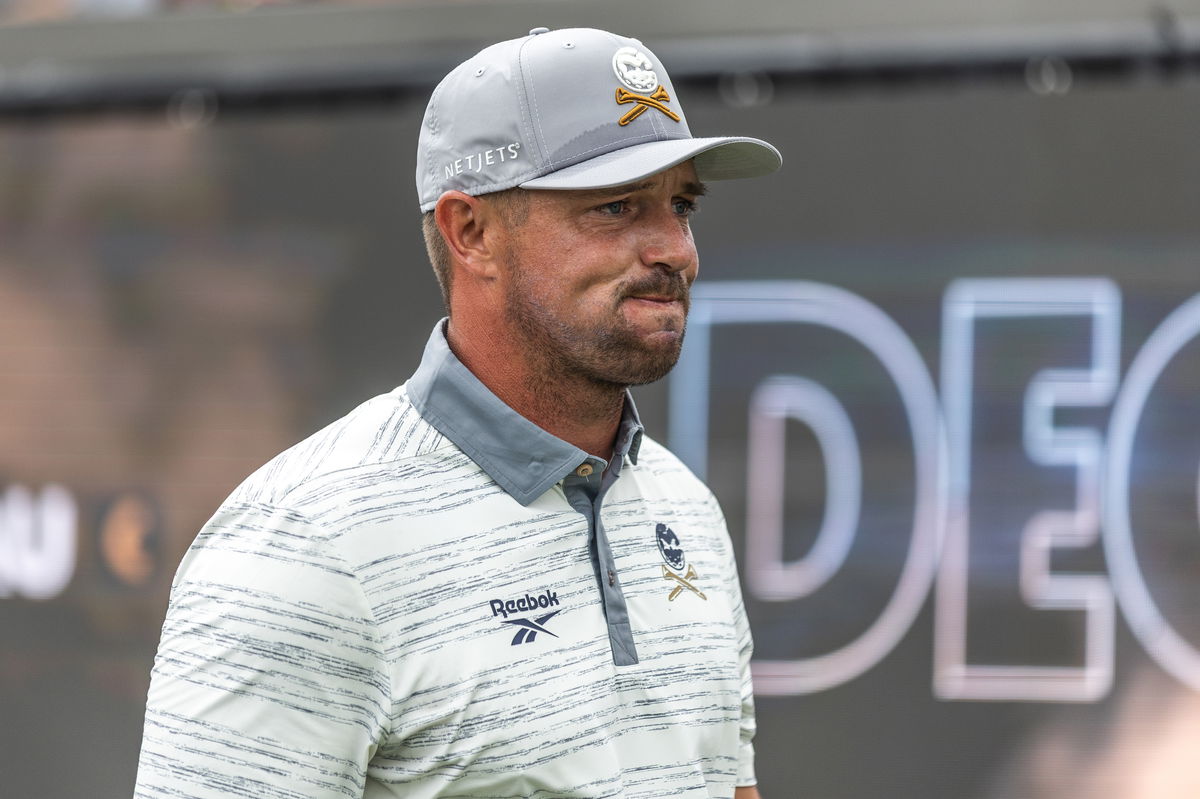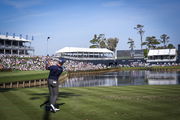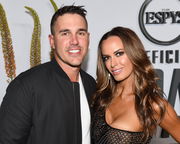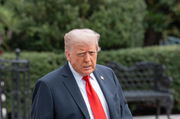
Getty
DORAL, FLORIDA – APRIL 04: Captain Bryson Dechambeau of Crushers GC reacts from the first tee during Day One of LIV Golf Miami at Trump National Doral Miami on April 04, 2025 in Doral, Florida. (Photo by Lauren Sopourn/Getty Images

Getty
DORAL, FLORIDA – APRIL 04: Captain Bryson Dechambeau of Crushers GC reacts from the first tee during Day One of LIV Golf Miami at Trump National Doral Miami on April 04, 2025 in Doral, Florida. (Photo by Lauren Sopourn/Getty Images
Bryson DeChambeau is known for power, speed, and using science to shape his game. He’s had success on many courses, but The Open is still a mystery he hasn’t solved. “I can do it when it’s warm and not windy,” he said last year when he missed the cut at Royal Troon amidst the windy and rain-battered conditions. The links-style course has consistently exposed the limitations of DeChambeau’s approach, and it remains his greatest weakness. Now, people are wondering—will he ever figure it out?
Watch What’s Trending Now!
Speaking of American players not used to playing the links style course, the analysts discussed how a links course demands creativity and adaptability, challenging players like Bryson DeChambeau, whose game is more robotic and scientific. One analyst delivered a brutal critique of DeChambeau’s approach, highlighting the fundamental mismatch —“Here’s a player who has said that he needs to adapt his game to links golf. He says all the right things, that yeah, ‘I need to work the ball into the wind and sort of be a little bit more strategic in that way.’ That runs counter to everything that Bryson DeChambeau does because he plays very few practice holes. What he does on the range is try and sort of author a repeatable robotic swing over and over and over again.”
The analyst went on to say that while this kind of regimented preparation can deliver results across most tournaments, it rarely succeeds at The Open — “That’s going to work great 51 weeks a year, but in the open championship, you have to be a more complete player, and you have to have finesse. I think there are more players like Bryson, particularly in this day and age, who have grown up on Trackman than who are sort of the artist, like a Scottie Scheffler.” The analyst highlighted that the Open still rewards improvisation and instinct, something that only players like Scottie Scheffler can do. He also went on to add that DeChambeau tries to be creative on the course, but he has a scientific approach to it, which eliminates variables, something we see commonly on a links-style course— “But Bryson thinks, that he is an artist. But everything he does is scientific in nature, in trying to create a repeatable motion.” And numbers back up these criticisms.
ADVERTISEMENT
DeChambeau’s track record at The Open is glaringly mediocre. Since his first appearance in 2017, he has never cracked the top 30. His best performance at the Open has been in 2022, where he finished tied 8th at the Old Course in St.Andrews. He has missed the cut thrice out of his seven appearances at the Open, including last year when he shot nine over par at the Royal Troon.
Bryson DeChambeau is still trying to solve the puzzle of The Open Championship's wind. ✍️ pic.twitter.com/KX5p5O1dwD
— Golf Digest (@GolfDigest) July 15, 2025
Compare this with his dominant win at the 2020 and the 2024 U.S. Open and four top-5 finishes at the PGA Championship, and it’s clear that his approach works better in controlled environments, where power and precision are rewarded. But The Open, with its unpredictable weather and where the slightest miscalculation can punish, plays by a different set of rules. The other analyst agreed and went on to say that DeChambeau wants the consistency and the predictability factor— “Bryson wants the constants. He wants the repeatable swing. He wants to know, I’m going to hit this nine iron 165 yards, not 166, not 164, 165 yards. He wants that in his life. Every part of his game, he wants to be that. Links golf is all about variables…”
ADVERTISEMENT
Even longtime golf analyst and commentator Brandel Chamblee has echoed these concerns, aligning with the view that DeChambeau’s approach is fundamentally at odds with what it takes to succeed at The Open.
Top Stories
Who Is Charley Hull’s Ex-Husband? Is LPGA Star Currently Dating?

Pro Suffers Disqualification at PGA Tour Q-School After Several Players Withdrew Abruptly

Golf World Feels Sorry for PGA Tour Hopeful as Meltdown Over Q-School Stress Is Caught on Camera

Brooks Koepka Takes up New Role Amid LIV Golf Exit Rumors Reaching Boiling Point

Donald Trump Puts Public Golf Courses on Notice Amid Control Dispute

ADVERTISEMENT
DeChambeau is not built for links, according to Brandel Chamblee
Even Brandel Chamblee has voiced skepticism about Bryson DeChambeau’s ability to succeed in links conditions, pointing to the technical aspects of his game that simply don’t translate to the Open Championship. “The high, really high ball flight, you don’t see him working his ball flight down as much. I don’t see him hitting as many left-to-right shots when there’s hard right-to-left wind. If you can’t fight the crosswind, you’re very limited on what you can do coming into the green, especially if there’s a hole location on the windward side. It just requires a lot of nuance and savoir faire, just playing an Open Championship under windy conditions, and especially so, I would argue, at Portrush.” Chamblee said.
It’s a pointed observation that reflects a recurring issue in DeChambeau’s Open performances—his lack of trajectory and shot-shape control, which becomes especially costly when links winds demand manipulation of the ball flight. Bryson’s preference for consistency and repeatability struggles against the inherent unpredictability of wind, turf, and bad bounces on links courses. And it’s clear that success at the Open often requires shot shaping, strategic risk-taking, and adaptability—qualities that may not align with Bryson DeChambeau’s current approach.
ADVERTISEMENT
ADVERTISEMENT
ADVERTISEMENT

